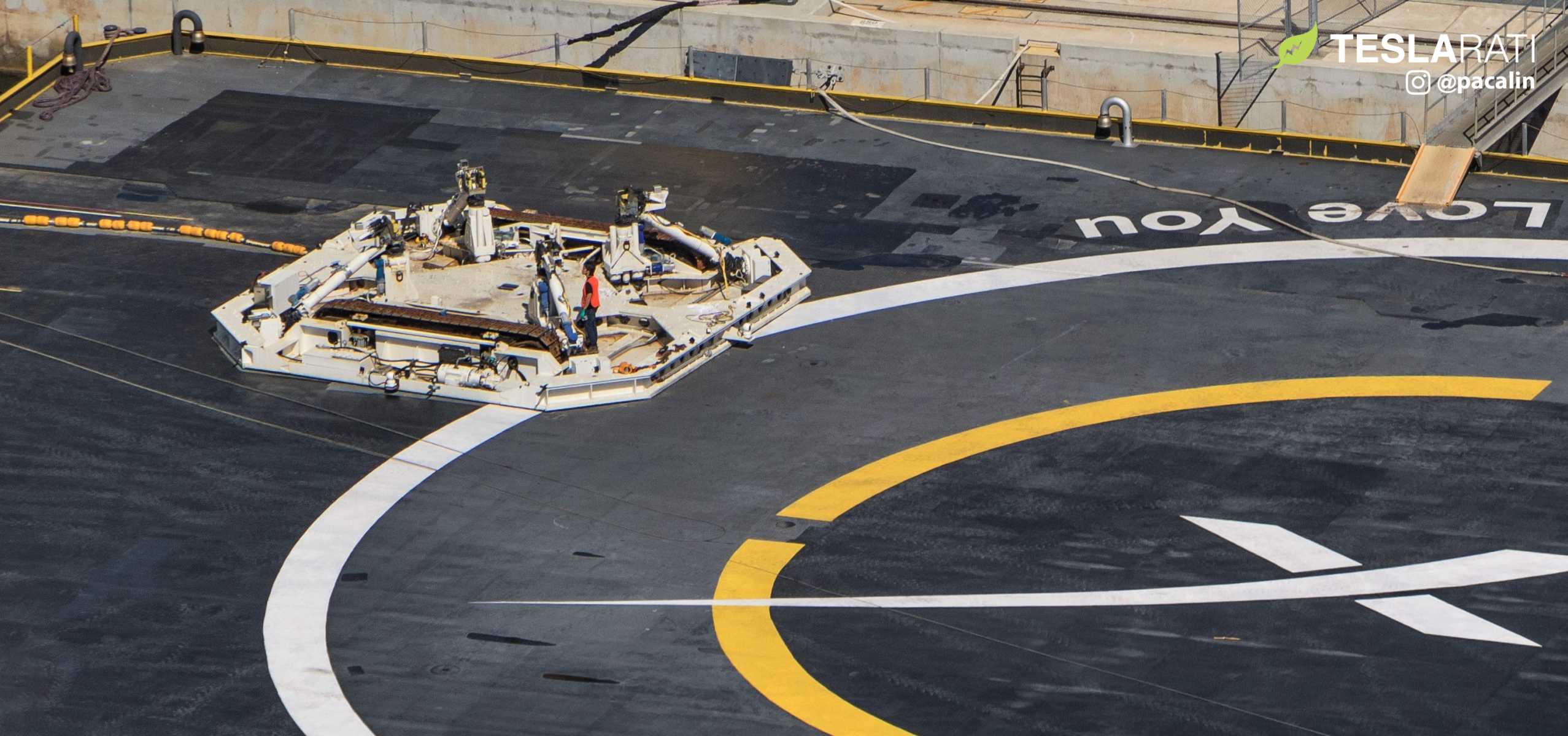
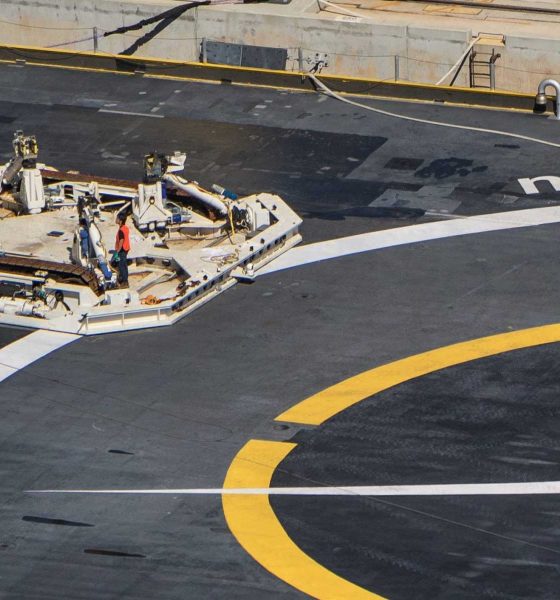
News
SpaceX eyes major drone ship fleet upgrades and a new rocket recovery robot
SpaceX has kicked off a series of major upgrades planned for its East Coast fleet of drone ships, centered around Just Read The Instructions (JRTI) and most recently culminating in the apparent fabrication of a second tank-like rocket recovery robot.
Back in Q4 2019, West Coast drone ship JRTI officially departed the Port of Los Angeles berth it operated out of for 3+ years — traversing the Panama Canal, making a weeks-long pit-stop in a Louisiana port, and ultimately arriving at Port Canaveral on December 11th. The modified barge spent more than a month relatively untouched – as was the somewhat mysterious cargo it had brought with it from the Gulf Coast – before SpaceX began JRTI’s long-awaited upgrades around a month ago.
For almost half a year, it’s looked like that SpaceX would move its West Coast drone ship to Florida after the company’s Vandenberg Air Force Base (VAFB) pad entered a major lull in launch activities in early 2019. Aside from one launch in June 2019, SpaceX’s West Coast pad has remained unused and that isn’t expected to change anytime soon. With Cape Canaveral potential reopening its dormant polar launch corridor just weeks from now, it’s entirely possible that SpaceX will be able to perform all of its planned launches from Florida alone for at least the next 6-12 months. Targeting more than 30 East Coast launches in 2020 alone, SpaceX could also benefit from at least one additional drone ship to continue high-volume Falcon booster recoveries without ship availability becoming a major launch constraint. Thankfully, JRTI may be the perfect solution.
Informally known as ‘Octagrabber’, a reference to the robot’s primary function, SpaceX has been using the only operational instance of the vehicle on drone ship Of Course I Still Love You (OCISLY) for more than two years, beginning in 2017. While far from autonomous, Octagrabber helps SpaceX’s maritime rocket recovery team minimize the risks workers are subjected to and gives the company a bit more flexibility to attempt Falcon booster landings in less-than-pristine ocean weather.
While Falcon boosters are relatively stable once landed, thanks to the vast majority of their empty mass being concentrated around their nine Merlin 1D engines, even moderate waves can cause them to slip and slide around the drone ship deck.
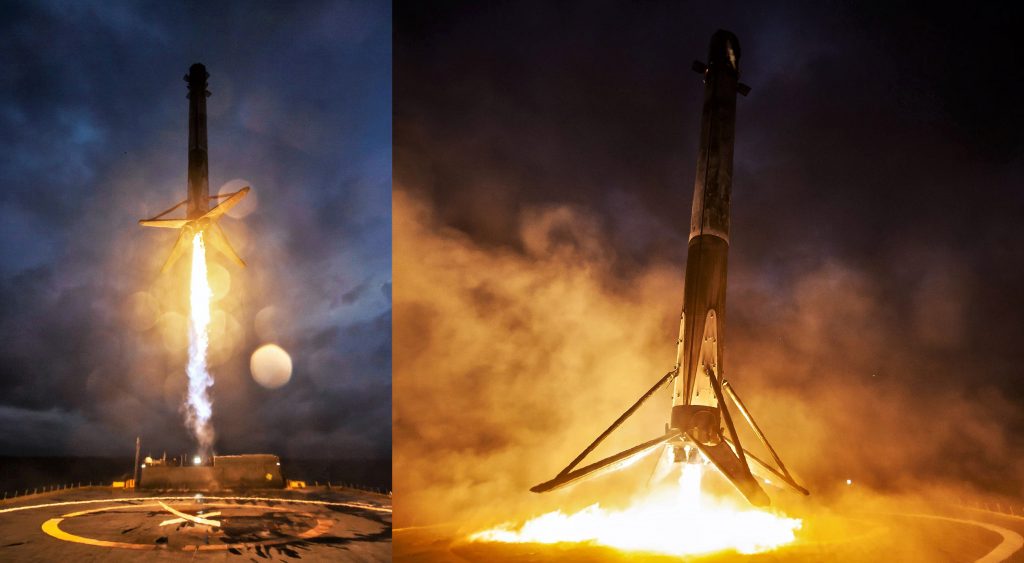
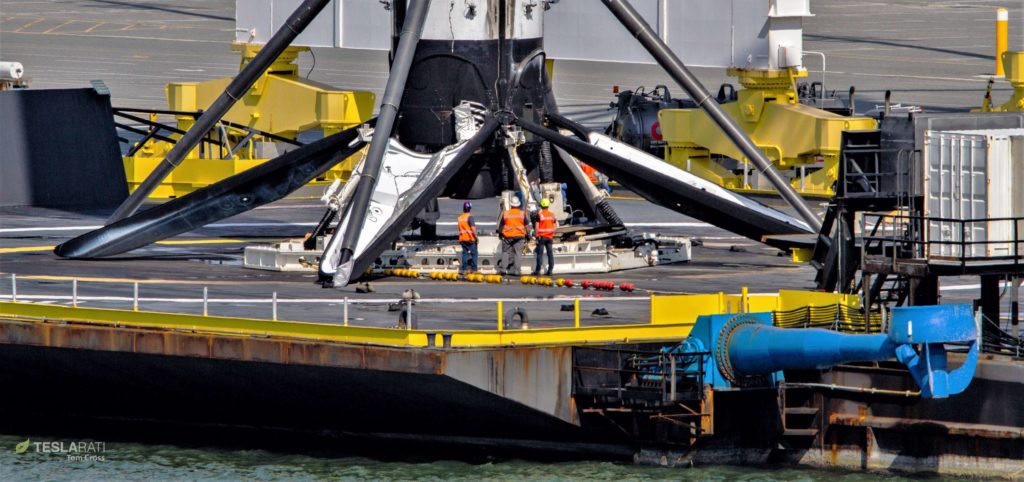
In fact, the best operational demonstration of the value of Octagrabber-style recovery robots came after SpaceX’s historic Falcon Heavy triple-booster recovery in April 2019 – the first time all three of the rocket’s first stage boosters successfully landed after liftoff. As it turns out, thanks to moderate hardware differences between Falcon Heavy center core boosters and normal Falcon 9 boosters, OCISLY’s Octagrabber robot did not have the attachment mechanisms needed to ‘grab’ the center core (B1055, in this case). In theory, this could be a non-issue but the drone ship unfortunately ran into high seas, making its deck to pitch and tilt and ultimately causing to B1055 to tip over, breaking in half and effectively destroyed the booster.
With Octagrabber robots, drone ships should almost never lose recovered boosters because of high seas (within reason). As such, it should come as no surprise at all that SpaceX is building a new recovery robot for drone ship JRTI – the newest addition to its Florida fleet.
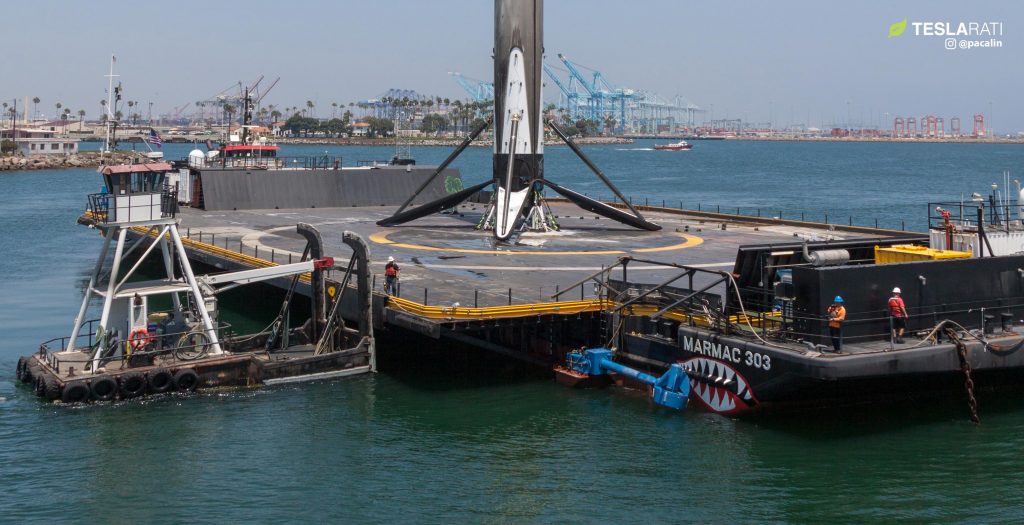
Aside from the discovery of a second Octagrabber being built at SpaceX’s former East Coast Starship factory, the nature of other upgrades planned for drone ship JRTI are more mysterious. For several months, the rocket landing platform has had almost a dozen massive generators and new thruster pods stored on its deck, seemingly waiting on an unknown impetus for their installation. In recent weeks, visible work to prepare the new hardware for installation has begun.
Notably, the thrusters and power supplies that seem destined for installation on JRTI would make for a dramatic upgrade, potentially giving the drone ship more power than the tug boats that must currently tender and tow them to landing zones. In other words, that’s a complicated way of saying that SpaceX may be trying to make drone ship JRTI almost entirely independent of contracted tugboats, potentially simplifying and lowering the cost of booster recoveries.

While less likely, it’s also possible that SpaceX is finally in a position to fully realize the “autonomous” namesake of its autonomous spaceport drone ships (ASDS), with high-powered thrusters potentially giving JRTI the ability to leave port, cruise to Atlantic Ocean landing zones, deploy an Octagrabber, and return to port with a booster – all without humans in the loop. That capability is likely still on the horizon but powerful thrusters and generators would bring port-to-port drone ship autonomy within SpaceX’s grasp in the near future.
Check out Teslarati’s Marketplace! We offer Tesla accessories, including for the Tesla Cybertruck and Tesla Model 3.

News
Tesla FSD fleet is nearing 7 billion total miles, including 2.5 billion city miles
As can be seen on Tesla’s official FSD webpage, vehicles equipped with the system have now navigated over 6.99 billion miles.

Tesla’s Full Self-Driving (Supervised) fleet is closing in on almost 7 billion total miles driven, as per data posted by the company on its official FSD webpage.
These figures hint at the massive scale of data fueling Tesla’s rapid FSD improvements, which have been quite notable as of late.
FSD mileage milestones
As can be seen on Tesla’s official FSD webpage, vehicles equipped with the system have now navigated over 6.99 billion miles. Tesla owner and avid FSD tester Whole Mars Catalog also shared a screenshot indicating that from the nearly 7 billion miles traveled by the FSD fleet, more than 2.5 billion miles were driven inside cities.
City miles are particularly valuable for complex urban scenarios like unprotected turns, pedestrian interactions, and traffic lights. This is also the difference-maker for FSD, as only complex solutions, such as Waymo’s self-driving taxis, operate similarly on inner-city streets. And even then, incidents such as the San Francisco blackouts have proven challenging for sensor-rich vehicles like Waymos.
Tesla’s data edge
Tesla has a number of advantages in the autonomous vehicle sector, one of which is the size of its fleet and the number of vehicles training FSD on real-world roads. Tesla’s nearly 7 billion FSD miles then allow the company to roll out updates that make its vehicles behave like they are being driven by experienced drivers, even if they are operating on their own.
So notable are Tesla’s improvements to FSD that NVIDIA Director of Robotics Jim Fan, after experiencing FSD v14, noted that the system is the first AI that passes what he described as a “Physical Turing Test.”
“Despite knowing exactly how robot learning works, I still find it magical watching the steering wheel turn by itself. First it feels surreal, next it becomes routine. Then, like the smartphone, taking it away actively hurts. This is how humanity gets rewired and glued to god-like technologies,” Fan wrote in a post on X.
News
Tesla starts showing how FSD will change lives in Europe
Local officials tested the system on narrow country roads and were impressed by FSD’s smooth, human-like driving, with some calling the service a game-changer for everyday life in areas that are far from urban centers.

Tesla has launched Europe’s first public shuttle service using Full Self-Driving (Supervised) in the rural Eifelkreis Bitburg-Prüm region of Germany, demonstrating how the technology can restore independence and mobility for people who struggle with limited transport options.
Local officials tested the system on narrow country roads and were impressed by FSD’s smooth, human-like driving, with some calling the service a game-changer for everyday life in areas that are far from urban centers.
Officials see real impact on rural residents
Arzfeld Mayor Johannes Kuhl and District Administrator Andreas Kruppert personally tested the Tesla shuttle service. This allowed them to see just how well FSD navigated winding lanes and rural roads confidently. Kruppert said, “Autonomous driving sounds like science fiction to many, but we simply see here that it works totally well in rural regions too.” Kuhl, for his part, also noted that FSD “feels like a very experienced driver.”
The pilot complements the area’s “Citizen Bus” program, which provides on-demand rides for elderly residents who can no longer drive themselves. Tesla Europe shared a video of a demonstration of the service, highlighting how FSD gives people their freedom back, even in places where public transport is not as prevalent.
What the Ministry for Economic Affairs and Transport says
Rhineland-Palatinate’s Minister Daniela Schmitt supported the project, praising the collaboration that made this “first of its kind in Europe” possible. As per the ministry, the rural rollout for the service shows FSD’s potential beyond major cities, and it delivers tangible benefits like grocery runs, doctor visits, and social connections for isolated residents.
“Reliable and flexible mobility is especially vital in rural areas. With the launch of a shuttle service using self-driving vehicles (FSD supervised) by Tesla in the Eifelkreis Bitburg-Prüm, an innovative pilot project is now getting underway that complements local community bus services. It is the first project of its kind in Europe.
“The result is a real gain for rural mobility: greater accessibility, more flexibility and tangible benefits for everyday life. A strong signal for innovation, cooperation and future-oriented mobility beyond urban centers,” the ministry wrote in a LinkedIn post.
News
Tesla China quietly posts Robotaxi-related job listing
Tesla China is currently seeking a Low Voltage Electrical Engineer to work on circuit board design for the company’s autonomous vehicles.

Tesla has posted a new job listing in Shanghai explicitly tied to its Robotaxi program, fueling speculation that the company is preparing to launch its dedicated autonomous ride-hailing service in China.
As noted in the listing, Tesla China is currently seeking a Low Voltage Electrical Engineer to work on circuit board design for the company’s autonomous vehicles.
Robotaxi-specific role
The listing, which was shared on social media platform X by industry watcher @tslaming, suggested that Tesla China is looking to fill the role urgently. The job listing itself specifically mentions that the person hired for the role will be working on the Low Voltage Hardware team, which would design the circuit boards that would serve as the nervous system of the Robotaxi.
Key tasks for the role, as indicated in the job listing, include collaboration with PCB layout, firmware, mechanical, program management, and validation teams, among other responsibilities. The role is based in Shanghai.
China Robotaxi launch
China represents a massive potential market for robotaxis, with its dense urban centers and supportive policies in select cities. Tesla has limited permission to roll out FSD in the country, though despite this, its vehicles have been hailed as among the best in the market when it comes to autonomous features. So far, at least, it appears that China supports Tesla’s FSD and Robotaxi rollout.
This was hinted at in November, when Tesla brought the Cybercab to the 8th China International Import Expo (CIIE) in Shanghai, marking the first time that the autonomous two-seater was brought to the Asia-Pacific region. The vehicle, despite not having a release date in China, received a significant amount of interest among the event’s attendees.








